Fishing Skinny Water: Riffles, Pockets, Side Channels, and Bank Water
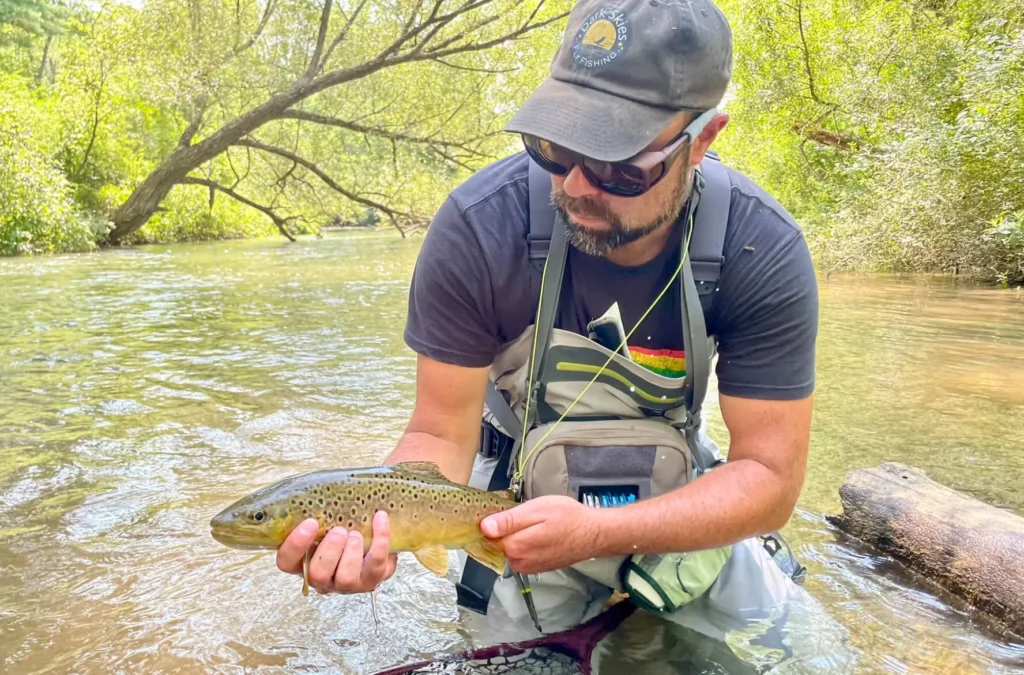
In the springtime, driving along popular stretches of streams and creeks often gives way to multiple cars in every pull off and numbers of fisherman stacked up in likely runs and pools. This scenario occurs as regularly in stocked put-and-take waters as it does special regulations sections. Sometimes, finding a place to strategically work with a fly rod can be quite challenging, but not impossible
Anyone that fishes with me regularly understands and recognizes that I love fishing shallow, skinny water. Nothing else in all of fly fishing is more enjoyable than deliberately picking apart every seam, object, and pothole in a shallow riffle. This water type lends itself perfectly to tight line and Euro nymphing approaches, my preferred way to fly fish.
As a matter of fact, I love fishing riffles and pocket water so much that I regularly walk straight past the most obvious runs and pools that hold trout. And these obvious water types are also the spots that attract and harbor the most trout fishermen, too. To beat the fishing crowds, learn to fish the shallow, less obvious trout holding water on popular streams and creeks.
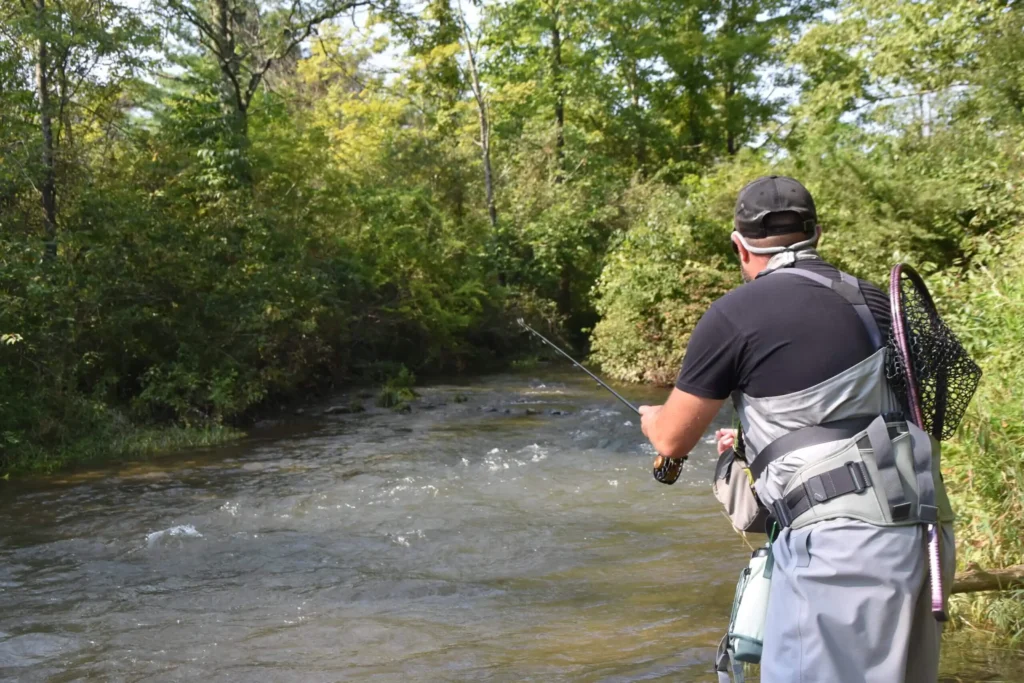
Riffles: The "Bee's Knees"
On waters with a large number of naturally reproducing fish, riffles are a crucial component in a healthy stream ecosystem. Riffles often serve as the nursery waters on a trout stream, and I can attest through observation that this is accurate. Many invertebrates reproduce and reside in the riffles of a stream. A host of mayfly and stonefly nymphs as well as caddis larvae are found amongst the rocks in riffles. Consequently, this is where many of these insects hatch as well! Larger prey items such as dace, sculpins, madtoms, gobies, creek chubs, fall fish and shiners, especially immature specimens, also reside in riffles, and mature stream fish of breeding age such as trout and suckers move into riffles to spawn during certain times of the year. Wild trout fry and fingerlings largely remain in riffles where they find relative safety from being preyed on by their larger brethren.
Because of available food sources found in riffles, mature trout regularly move into these stream habitats to feed and hold, too, and fishing for these riffle trout might just leave an angler in isolation from others.
Please note: When observing trout actively spawning on redds, it is unethical to target them. Leave these fish to perform their reproductive rituals and assure a new generation of fish has the opportunity to proliferate.
A Zig-Zag Pattern Approach to Fishing Riffles
Last January, my friend Ralph Scherder and I fished the upper section of Yellow Breeches Creek, a stream that supports both stocked rainbows and a quality population of stream-bred browns. The winter day was mild in the low to mid fifties with partly sunny skies and a light breeze. Because of the favorable weather, others decided to also get in some winter fishing and the runs and pools quickly inherited numbers of anglers.
We started on a very nice looking run and picked up several good fish including a pig hen rainbow we affectionately named Tubs. Working our way upstream we encountered fishermen targeting the obvious, deeper holding water. Not to be deterred, Ralph and I focused our attention on overlooked sections of the stream. I posted up in a very shallow riffle, 10-15” deep, that dumped into a deep, green run.
Beginning at the bottom of the skinny riffle, working the near-side seam, I immediately caught a feisty 8” wild brown trout using an across and upstream approach. My preferred method of picking apart a riffle is to begin on the near side and fish two rod lengths upstream and one over. Fishing upstream remains the favored first approach because trout holding in skinny water can be spooked easily with sloppy wading, poor casting and errantly presented flies. However, do not relinquish the downstream presentation entirely either
Work across the entire stream width on the same plane this way. Once reaching the far side, take two or three steps upstream and work the riffle back across in the opposite direction the same way. Personally, I continue this approach until I’m at the head of the riffle. When covering a distance of 40-50 yards in a long riffle, fishing this type of zig-zag pattern methodically might take several hours!
Our decision to target skinny, overlooked water paid off as I caught five or six wild browns in the 7-10” range using this tactical method. And although the fish landed were smallish, I had an absolute blast picking this water apart and was rewarded with beautiful and feisty wild trout! I could not have been more pleased.
Reading Riffles
At first glance, riffles appear uniform and featureless. Typically, there are no large pieces of structure such as boulders, logs, bridge pilings and root balls. The surface of the water is broken by countless facsimiles of tiny standing waves. The bottom is often visible as it lacks the depth that hides the stream bottom. However, riffles possess three features that I aptly call micro-structure: seams, potholes and objects.
A seam occurs where two alternative currents come together. This structure is observable by bubble lines at the surface and color changes on the bottom. Below the faster current is a scoured out trough that is darker in color. It is likely only 4-6” deeper. The lighter bottom color is created by sand and silt being deposited in the slower current. The bubble line often collects and moves downstream right on the line of the color change, and this is a feature trout will hold in a riffle as it is a conveyor belt delivering food. Present nymphs along this seam on an upstream, drag-free drift and fish will begin filling the net.
Potholes form when a hump in the streambed, much like a parking lot speed bump, causes water to gently spill over digging out a depression in the substrate. Trout hold in these depressions as they form a break in the current as a result of increased friction.
Locate potholes by carefully reading your sighter during a drag-free drift. As your sighter suddenly slows as it travels downstream the nymph has likely dropped into this depression. If the first pass does not result in a take, continue working the pothole using your fly as a form of “sonar” to “see” the bottom features. Finding and then working a pothole is another great way to locate and catch fish in skinny water.
Using a fly to “see” the bottom is a challenging Euro nymphing skill to acquire that takes a lot of practice. However, it can be achieved using both sight and feel. First, while carefully watching the sighter during a dead drift, remain observant to detect any changes in rate of speed. When the sighter suddenly slows it is because the nymph(s) have dropped into a depression or trough in the stream bottom causing the water flow rate to decrease noticeably. Detecting this decrease in sighter speed alerts the fisherman to a pothole or trough in the riffle bed.
Finally, there are objects sitting on the bottom of riffles, albeit they are usually too small to change the flow of the water on the surface of the stream. These small objects are typically slightly larger rocks or waterlogged, submerged lengths of tree limbs. Again, these objects create increased friction, slowing the flow of water.
Trout hold in these current breaks beside and behind the structure taking food items from the drift. Fish the near and far sides as well as directly behind these objects to locate trout.
Use the sensitivity of a nymphing specific fishing rod to feel for structures along the streambed. I work hard to present my flies several inches off of the bottom in the feeding lanes of trout.
Popular belief is that the flies should be fished on and ticking bottom continuously, but this is just not accurate and causes the flies to be presented below and under the trout! As flies are being fished 2-3” off of the streambed, ticks, taps and quick snags can be transmitted through the tippet, sighter, leader and rod. Remember that these ticks and taps are caused by the fly bumping off of slightly higher rocks and limbs. Fishing on both sides and behind these hidden structures in riffles results in anglers being rewarded with a hooked trout.
Pocket Water
Pocket water is different than riffles because it is created when large rocks and boulders break the surface of the stream. This structure creates depth changes, from only a few inches to a couple feet deep, many varying current breaks and speeds and countless seams. Likewise, pocket water remains relatively shallow, too. Much like riffles, it is a structure often overlooked by many anglers. Reading pocket water is easier than a riffle as the fish holding spots are more obvious and the water type appears less uniform.
Each boulder creates an aptly named pocket as the structure slows down the current, creates depth and provides fish a spot to hold intercepting food in the drift. Pockets can be as small as 12” diameter to several feet across or long. I describe individual pockets as either toilet bowls or bathtubs as these measurements are common ground and familiar to all bathroom-using fishermen.
To effectively fish pocket water, begin with the pockets closest to the near side of the stream working across and up as described when approaching riffles. Be sure to prospect both the right and left as well as the downstream side of each boulder as trout can hold in each of these spots.
One preferred method to fishing pockets is to cast a nymph in the faster, shallower water above the structure. Guide the fly, using controlled drag with the rod tip and line hand, into each pocket dropping the rod tip as it enters the deeper and slower water. This will allow the nymph to sink into the feeding lanes of the waiting trout. As the nymph enters the pocket, establish contact and a drag free drift. Be ready to set the hook as the trout will often eat the fly on the drop. Fish can hit hard in pocket water because their window to intercept the fly is very short causing them to eat possible food sources with greater conviction and enthusiasm!
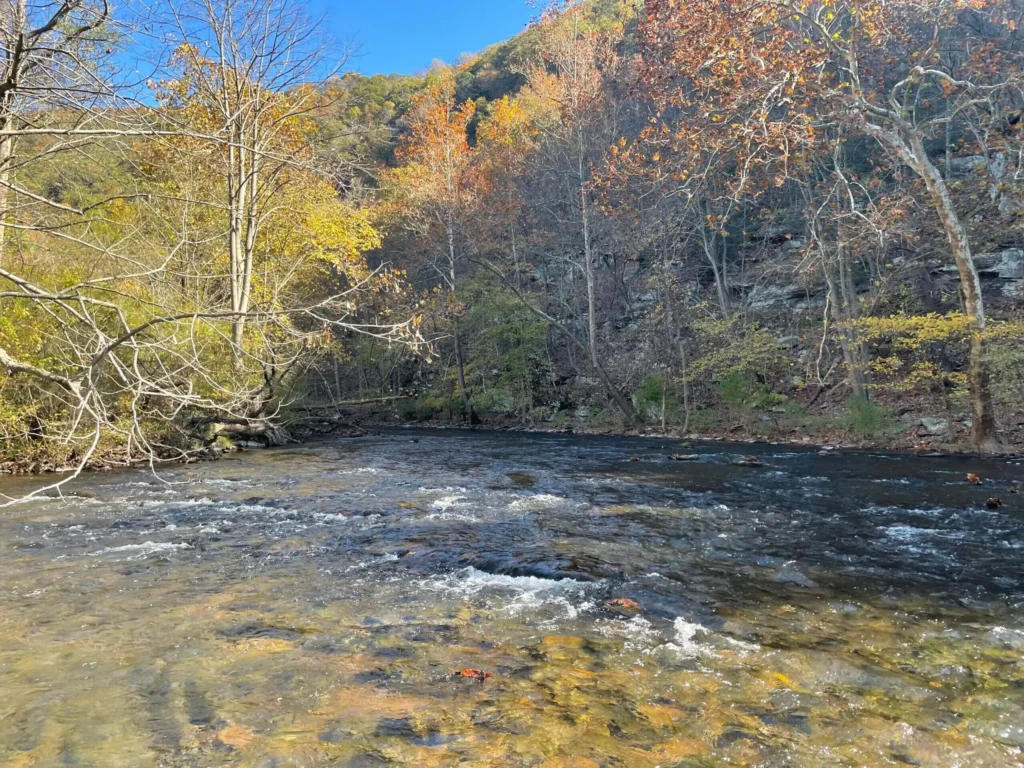
Side Channels
Side channels are created when the course of a stream, creek or river is interrupted by an island. Islands can occur on the smallest mountain brooks to the largest trout rivers and all streams and creeks in between. Primarily, islands are found on waterways with shallow gradients as they are formed as gravel, sand and silt is deposited. Some islands are bare sand and gravel bars and others have weeds, brush and trees growing on them.
The side channel is the smaller stream section on either side of an island and the section of stream that would not be perceived as the main waterway. As a matter of fact, side channels may become little more than a trickle to void of water completely during periods of low flows.
The interesting thing about side channels is that they possess all water types, i.e., pools, runs, riffles, pocket water and bank water. Fish these water types using the same approaches as are used in the main waterway. Fish often move into side channels during the heaviest flows because they provide more comfortable holding water with an opportunity for new and more food resources. I have observed fishermen stacked up in the main river channel as the side channels are left unfished completely! This is totally fine by me because I have caught some very nice trout in this often overlooked water type that has saved my day from battling crowds to finding fishable water in isolation.
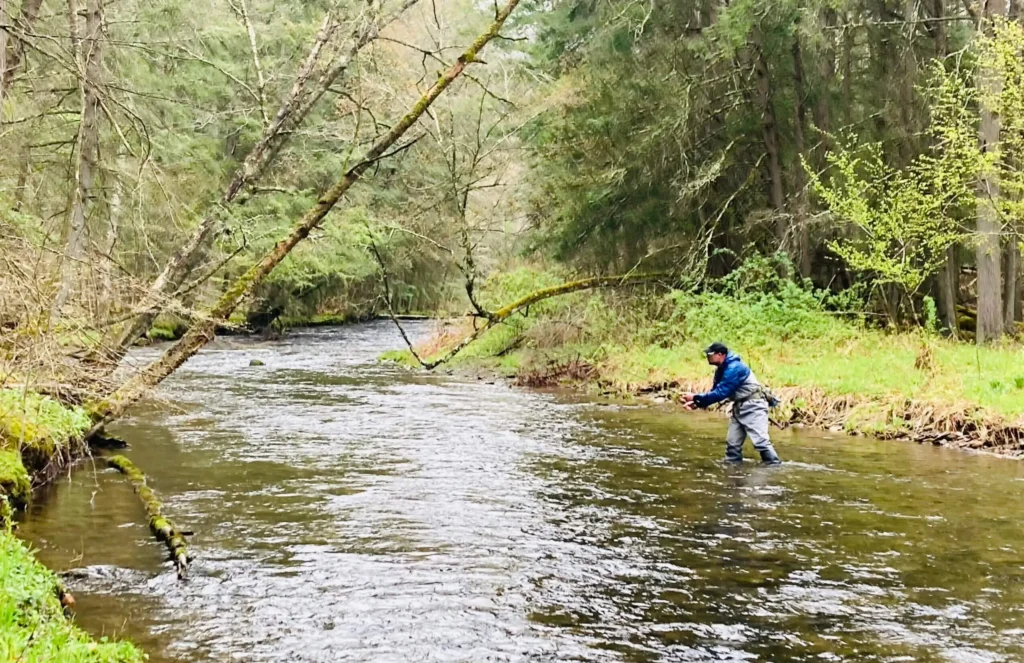
Bank Water
Not all stream banks are created equal. Some stream banks are fish holding structures and others simply are not. Spend time observing stream banks to recognize those that hold fish and those that do not. Banks on the inside of bends and those alongside deep runs and pools are shallow and gradually fall into the deeper water. These gradual banks are formed as sand, silt and gravel is deposited in the shallows by faster water. These types of stream banks do not regularly hold trout.
However, stream banks that drop steeply into the water column, possess undercuts or overhanging brush often hold good numbers of fish and should not be overlooked. Unlike other less targeted spots on trout streams, an undercut bank with deeper water close by can often hold some of the largest fish in the stream. Even if the bank water itself is shallow! Steep banks and those with overhanging weeds and brush are places where terrestrial insects readily fall into the stream. Trout position themselves to feed on these less fortunate insects.
Fish stream banks from the opposite side or the middle of the stream casting up and across. Tucking a nymph into an undercut or drifting a dry fly right along a brushy overhang might entice a nice fish to shoot from its lair to take the offering. However, getting into position to fish an opposite streamside bank often is challenging as deep or fast water separates the angler from the spot being fished. However, strategically working into position to present a fly along a favorable bank might just grab the attention of the stream’s largest fish!
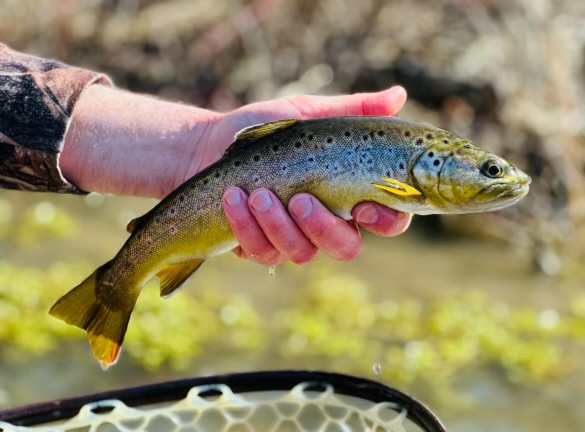
Seasonal Shifts and Stocked Trout Considerations
One of the many appeals of fishing for wild trout is that it is an authentic, natural experience. Wild fish spread out in a healthy stream ecosystem taking advantage of all water types depending on the conditions and availability of food resources. When fishing a wild trout stream, rest assured that the skinny water is holding good numbers of catchable fish that are often overlooked.
Nevertheless, there are times when even wild trout move out of the skinny water completely, and even if they are still there, they become harder to catch. Targeting wild trout in these types of spots under adverse conditions is largely unproductive
During prolonged periods of cold, winter temperatures, trout will move into slower and deeper water to conserve energy. In retrospect, if the water is incredibly low and clear, skinny water makes trout susceptible to avian and terrestrial predators, so they will move to deeper water to seek safety. In many trout streams, skinny water can warm faster compared to deeper water as there is less concentrated volume and the rocks on the bottom absorb heat energy from the sun. Finally, riffle and pocket water trout can be remarkably challenging to catch during a high, sunny, bluebird sky as they become cagey and wary with such little water over their heads.
Targeting wild trout, and to a lesser degree stocked trout, in skinny water varies depending on the season and time of day. During the dog days of summer, July through September, wild trout move into riffles, pockets and stream margins to feed early in the morning and late in the evening. This is because these times afford cooler water temperatures and a lower sun providing the fish safety and comfort. Target skinny water trout near sunrise and sunset from July through September. I have often contemplated that maybe a stream’s largest, most predatory brown trout move into skinny water through the night to feed in the shallows nocturnally.
In contrast, during the coldest months of the year, trout are most likely to be found in skinny water during the height of the day as water temperatures are slightly warmed and the fish actively feed. I have experienced good fishing in February and early March in skinny water between the times of noon and 3:00 PM.
The above points being understood, spring and fall are the magical times to fish for trout in skinny water. From mid March through June, water conditions are likely at their best and aquatic insects are most active and bring good numbers of trout into the riffles, pockets and banks. Again, as nighttime temperatures drop and days remain cooler in late September through mid November, trout freely move into and hold in overlooked water types. Fall is a great time to target skinny water trout, but please be mindful of spawning fish in November and December.
On stocked trout waters, there are times when riffles, pockets, side channels, and banks are completely void of fish. Immediately following being placed in the stream from the stocking trucks, trout congregate at the stocking points. When riffles and pocket waters are not one of these points then it is safe to say that the trout have not moved into these stream sections. When stocked streams are running low to low average, the fish do not disperse and spread out readily. They remain stacked up in the same locations that they were dumped from the buckets.
Nevertheless, during periods of heavier rainfall, stocked fish have plenty of water over their heads, and they will disperse and spread out much like their wild counterparts. And not just ten or twenty yards up or downstream either! Stocked fish will migrate hundreds and hundreds of yards, sometimes much further, relocating to far and away stream sections between or beyond stocking points.
Stocked trout find new holding water during periods of strong stream flows. This results in prime opportunities to fish for stocked trout in skinny water, too.
Parting Thoughts
Too many times, after completing a long drive in great anticipation, I have pulled into a stream bottom only to find hordes of anglers stacked up elbow to elbow in likely, obvious pools and runs. This can feel very discouraging as if the day is ruined by others.
However, do not be deterred or allow the day to be ruined! Adapt to the situation by targeting the water types that most others pass by: riffles, pockets, side channels, and bank. But don’t worry, these are the waters that trout love. Learn to fish and love skinny water, too, and you will be rewarded.
Fishing these water types takes considerable practice and the necessary skills and techniques can be challenging initially. But, like any fishing approach, targeting trout in skinny, overlooked holding water can put more fish in the net at the end of a session.
Watch: Winter Fly Fishing on Yellow Breeches Creek
Did You Find This Article Helpful?
Stay up to date with the Dark Skies Fly Fishing monthly newsletter for free and receive the latest posts in fly fishing news, tricks, tips, and techniques, stream reports, as well as updates on new flies added to the Online Store and exclusive discounts!
Sign Up NowHave a fly fishing question you’d like answered? Drop us a line at info@darkskskiesflyfishing.com! If we use your question in a blog post or in the newsletter, we’ll send you a FREE fly box with a dozen of our favorite nymphs and dry flies!


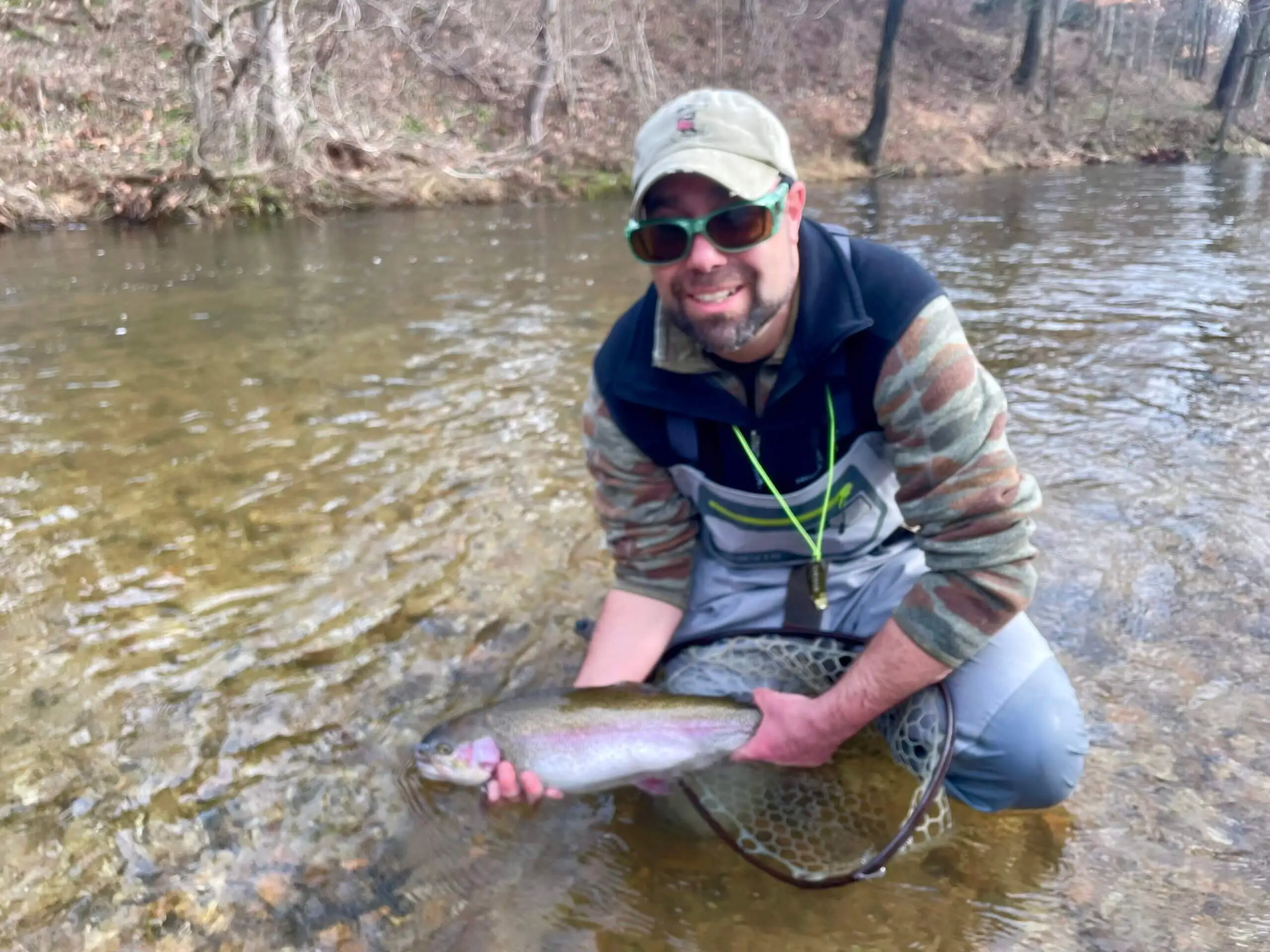

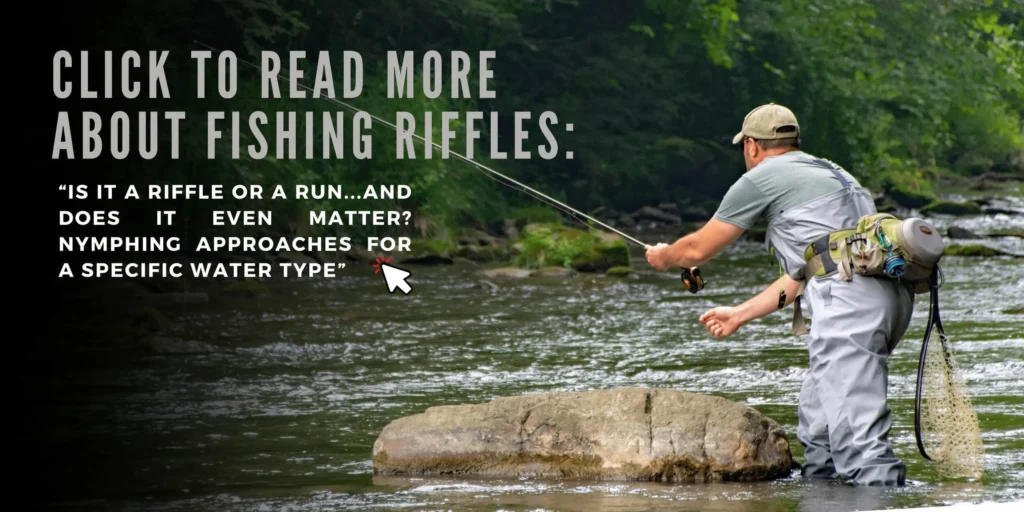
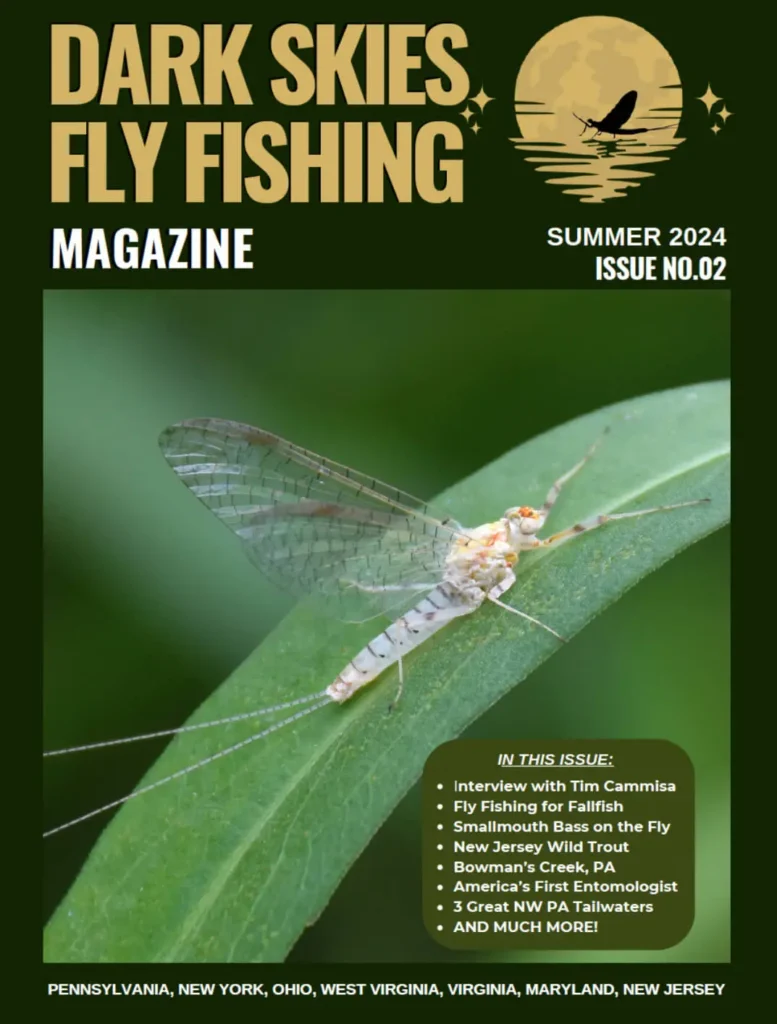
I enjoyed reading “Fishing Skinny Water.” In that article, you say “Banks on outside of bends and those alongside deep runs and pools are shallow and gradually fall into the deeper water.” Did you mean “on the inside of bends”?
Yes, good catch! I will correct that. Thank you!
Ralph